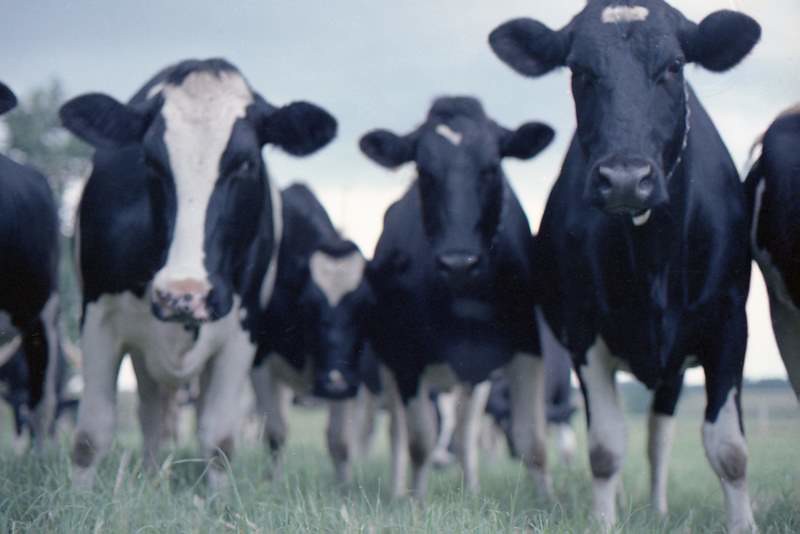While dairies may not be the first thing that comes to mind when thinking about Montana agriculture, Montana’s dairy industry has been around a long time and plays an important role in milk consumption in the state. Unlike many agricultural products produced here, the majority of milk produced is consumed here. According to the Montana Milk Board, in Fiscal Year 2018, Montanans consumed over 20 million gallons of fluid milk, and 83% of that was supplied by Montana dairies. (For butter, half-and-half, cream, and ice cream, the proportion of Montana-supplied consumption is much lower.) In 2018, Montana had 61 dairies with a total of 11,198 cows. Both of these numbers are on the decline.
Joel Schumacher and I spent part of last week traveling with Farm Service Agency staff and University of Idaho Extension Specialist Hernan Tejeda talking about the new dairy margin program in the 2018 farm bill. For those interested, you’d better act soon—the signup deadline is September 20. Dairies have not had an easy time over the past few decades; other states have seen dramatic declines in the number of dairy farms as well. Secretary Perdue has said that the dairy program is “one of the Department’s top Farm Bill implementation priorities.”
The new Dairy Margin Coverage (DMC) program is a form of insurance that aims to provide dairy margin protection. (Margins here refer to a measure of revenue over feed costs.)
Here’s a quick rundown of that program.
–DMC is an overhaul of the previous Margin Protection Program (MPP) from the 2014 farm bill.
–Available coverage is based on a chosen percentage (5% to 95%) of production history. But if you don’t have production history established with FSA, you can work with your local office to create one. Find them here.
–The price to participate in the program is a $100 administrative fee, plus a premium for higher than $4.00/cwt margin coverage, per year. (In many cases the administrative fee can be waived, such as if the operation is run by a veteran, limited resource, beginning or socially disadvantaged farmer. Check with your FSA office for details.)
–Covered production is divided up into Tier 1, or the first five million pounds of milk, and anything greater than that (Tier 2). Most Montana dairies are small and so will fall entirely under Tier 1. The premium cost is much lower for Tier 1 than Tier 2. For example, the premium for insurance that provides a payment if the actual monthly margin falls below $8.00/cwt at Tier 1 is 0.1000/cwt. But for Tier 2, it is nearly 20 times that–$1.8130. If you choose a coverage of $8.50/cwt or higher at Tier 1, you can select a different coverage level for Tier 2, which does not go higher than $8.00/cwt. There’s no extra charge for catastrophic coverage (coverage at $4.00/cwt) at Tier 2.
–Since the program is retroactive for 2019, it’s evident that the $8.50/cwt and higher coverage levels will pay out (since most months are behind us already). And, the payment net of premium will be maximized at the $9.50 coverage level.
–The DMC decision tool can help calculate premiums, as well as projected returns for different levels of coverage. Check it out here.

